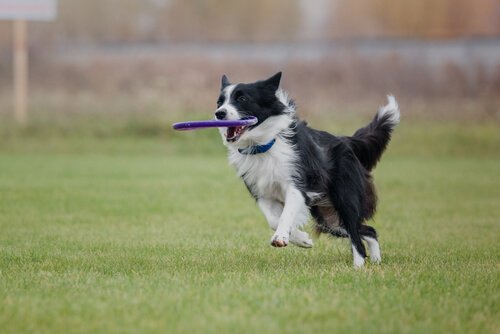How to Train a Border Collie, One of the Most Intelligent Dog Breeds

The border collie is one of oldest herding and working dog breeds that are easy to train due to their amazing qualities and skills. In today’s article, you can find some practical advice on how to train them.
Qualities that make a border collie so easy to train
Here are some of the qualities:
- Trainability. Border collies are very persistent, so if you try to train one to do something, it won’t stop until it’s learned how to obey the command. They have an incredible learning ability and a good attention span when it comes to listening to words.
- Obedience. This is one of the main qualities of a border collie. It will never disobey you, no matter the circumstances are. The fact that they’re so obedient is just another reason to train them well.
- Calmness. They’re definitely not small, and they need a good amount of exercise. However, border collies are generally very calm. They’re never jumpy or hyperactive, so they’re perfect for a family. If you know how to train it without letting it get overexcited, you’ll have a great family dog.
- Intelligence. This is another part of why it’s so much easier to train a border collie. Their intelligence makes it worth teaching them more complex commands, and you can even show off in front of your friends with your talented dog.
- Shepherding. Since border collies have been used for so long as sheepdogs, they have natural guard dog instinct. They’re also perfect if you want a pet that can act as a guard dog, because they would protect their loved ones at any cost.

How to train a border collie
It’s always best to start training a dog when it’s still a puppy. However, you can’t teach it everything. There are some commands that require the dog to fully developed in order to learn them. Here’s a short guide to give you an idea of how to train a border collie properly.
Three to six months old
This is the time you should start socializing your dog. What that means is getting him used to being around other people and dogs. You can also teach it basic things like how to sit, calm down, get up, or walk alongside you without a leash.
If you want to do that last one, make sure you begin by being in a closed space so your puppy dog doesn’t run away.
Six to nine months old
Now you can work on stopping it from barking, having it bring you something, or rolling objects around. By this time your dog should understand that you’re the pack leader, which means it has to obey you.
This fact — along with its intelligence and persistence — is what helps it learn commands quickly.
One year and more
Once it’s a year old, you can train a border collie to do anything you like. This is the best age to start sending it to a professional trainer if you want it to do things like bring you the newspaper, take its plate to the kitchen, etc.
Tips on how to train a border collie
Although they are really good at focusing, this quality can tire them out. So, just like with other dogs, you have to keep the training sessions short, around 10-15 minutes long.

Positive reinforcement is an absolute necessity when it comes to training any dog. Shouting and punishing them are barbaric ways to treat an animal.
Keep in mind that even though all border collies share common qualities, every dog is still its own universe. This means you need to adapt the training to your dog’s needs, abilities, and limitations.
If you’re committed, patient, and affectionate, you’ll end up with a well-trained, wonderful pet.
All cited sources were thoroughly reviewed by our team to ensure their quality, reliability, currency, and validity. The bibliography of this article was considered reliable and of academic or scientific accuracy.
- Deldalle, S., & Gaunet, F. (2014). Effects of 2 training methods on stress-related behaviors of the dog (Canis familiaris) and on the dog–owner relationship. Journal of Veterinary Behavior, 9(2), 58-65.
- Hiby, E. F., Rooney, N. J., & Bradshaw, J. W. S. (2004). Dog training methods: their use, effectiveness and interaction with behaviour and welfare. ANIMAL WELFARE-POTTERS BAR THEN WHEATHAMPSTEAD-, 13(1), 63-70.
- Fugazza, C., & Miklósi, Á. (2014). Should old dog trainers learn new tricks? The efficiency of the Do as I do method and shaping/clicker training method to train dogs. Applied Animal Behaviour Science, 153, 53-61.